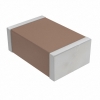- Deutsch
-
EnglishDeutschItaliaFrançais日本語한국의русскийSvenskaNederlandespañolPortuguêspolskiSuomiGaeilgeSlovenskáSlovenijaČeštinaMelayuMagyarországHrvatskaDanskromânescIndonesiaΕλλάδαБългарски езикAfrikaansIsiXhosaisiZululietuviųMaoriKongeriketМонголулсO'zbekTiếng ViệtहिंदीاردوKurdîCatalàBosnaEuskeraالعربيةفارسیCorsaChicheŵaעִבְרִיתLatviešuHausaБеларусьአማርኛRepublika e ShqipërisëEesti Vabariikíslenskaမြန်မာМакедонскиLëtzebuergeschსაქართველოCambodiaPilipinoAzərbaycanພາສາລາວবাংলা ভাষারپښتوmalaɡasʲКыргыз тилиAyitiҚазақшаSamoaසිංහලภาษาไทยУкраїнаKiswahiliCрпскиGalegoनेपालीSesothoТоҷикӣTürk diliગુજરાતીಕನ್ನಡkannaḍaमराठी
Wie funktionieren Step-up-Transformatoren?
- 2024/10/15
- 128
Katalog
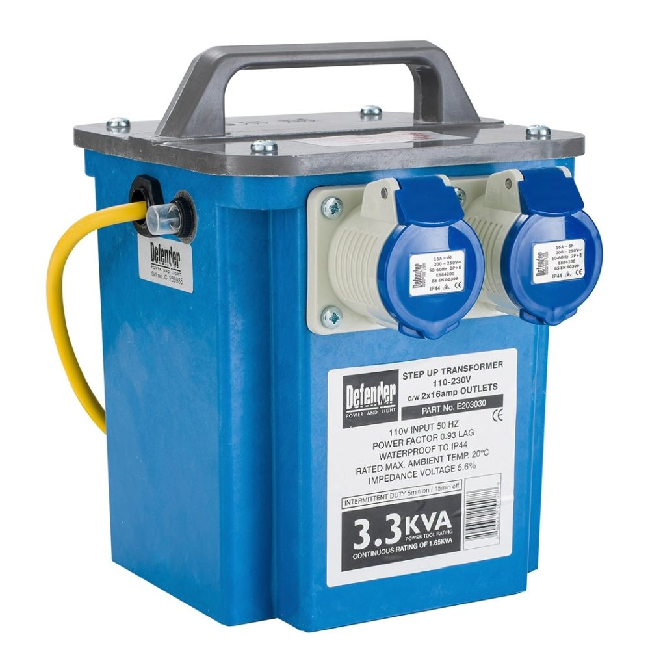
STRECK-UP-Transformatoren
Ein Step-up-Transformator ist wichtig bei der Übertragung der elektrischen Leistung.Es hat einen Kern und Wicklungen.Der Kern besteht normalerweise aus Materialien wie Ferrit oder Siliziumstahl, die den Energieverlust verringern.Durch die Verwendung von laminierten Kernen reduziert der Transformator den Wärmeaufbau und verbessert die Effizienz und Leistung.
Die Wicklungen in einem Step-up-Transformator sollen die Spannung erhöhen.Die primäre Wicklung hat weniger dickere Drahtwechsel, während die sekundäre Wicklung mehr dünnere Drahtwunden aufweist.Dieses Setup erhöht die Spannung.Kupfer wird häufig für Wicklungen verwendet, da es langlebig ist und Strom gut leitet.Kupfer-Wundtransformatoren sind hocheffizient und zuverlässig, wodurch sie ideal für hochdarstellende Anwendungen sind.
Ein Step-up-Transformator funktioniert, indem die Spannung erhöht wird.Wenn der Wechselstrom durch die primäre Wicklung fließt, erzeugt er ein Magnetfeld, das eine Spannung in der sekundären Wicklung induziert.Die Spannungserhöhung hängt von der Anzahl der Kurven in den Wicklungen ab.Weitere Kurven im sekundären Wickelmittelwert höhere Spannungsausgang.Ingenieure verwenden Isolier- und Kühltechniken, um den Transformator zuverlässig und effizient zu halten, insbesondere bei Hochspannungsbedingungen.
Verschiedene Arten von Step-up-Transformatoren
Hochfrequenz-Stufe-Transformator
Ein Hochfrequenzschritttransformator verwendet fortschrittliche Technologien wie PWM (Puls Width Modulation) und IGBT (Isolation Gate Bipolar Transistor) Geräte, um die Effizienz und Tragbarkeit zu verbessern.Es ist ideal für DC-Hochspannungstests vor Ort aufgrund seines starken Überstrom- und Überspannungsschutzes, während er kompakt und leicht bleibt.Dies macht es in Situationen nützlich, in denen tragbare und zuverlässige Lösungen erforderlich sind, z.
DC-Step-up-Transformator
Der DC-Step-up-Transformator ist klein, leicht und sehr anpassungsfähig und wird üblicherweise verwendet, um die Isolationsfestigkeit von Hochspannungsgeräten zu testen.Der kaltgeschaltete Silizium-Stahlkern verringert das Lärm und erhöht die Effizienz. Dadurch ist es für Versorgungsunternehmen und Industrieanlagen während der Wartung und Prüfung zuverlässig.
AC-Stepp-Transformator
Der mit Eisenkern und Spulen hergestellte Wechselstrom-Stufe-Transformator ändert die Wechselspannung und den Strom, wodurch es für Isolierungstests von Hochspannungsgeräten geeignet ist.Das kompakte Design sorgt für Zuverlässigkeit und Effizienz bei Hochspannungstests, insbesondere in der Stromerzeugung und in der Verteilungsumgebung.
Trockener Einstiegstransformator
Trockene STRECK-Transformatoren beseitigen das Brand- und Explosionsrisiko in ölgefüllten Modellen und entsprechen strengen Sicherheitsstandards.Sie verfügen über Schutzhäuse (IP23) für eine effektive Kühlung und den Schutz vor Fremdkörpern.Diese Transformatoren werden aufgrund ihrer Sicherheits- und Umweltvorteile in städtischen und öko-sensitiven Gebieten bevorzugt.
Niederfrequenz-Step-up-Transformator
Dieser Transformator wurde für niederfrequente Anwendungen entwickelt und verwaltet den Kernfluss, um eine Überhitzung und Beschädigung von Spulen zu verhindern, um einen sicheren Betrieb zu gewährleisten.Es wird für seine Zuverlässigkeit in Laborumgebungen und spezialisierte industrielle Anwendungen bewertet, bei denen Präzision schwerwiegend ist.
Hauptmerkmale von Step-up-Transformatoren
Bei der Auswahl von Step-up-Transformatoren verdienen verschiedene Faktoren genau Aufmerksamkeit:
Effizienz
Effizienz ist erforderlich, da sie den Stromverlust verringert.Hocheffiziente Transformatoren sparen Energie und niedrigere Kosten, insbesondere in Branchen, in denen die Energieeffizienz wichtig ist.Die Verwendung effizienter Transformatoren kann die Leistung verbessern und Energierechnungen reduzieren.
Anzahl der Phasen
Einphasige-Transformatoren werden normalerweise für kleinere Strombedürfnisse verwendet, wie in Häusern.Drei-Phasen-Transformatoren sind besser für den industriellen oder kommerziellen Gebrauch, da sie mit höherer Leistung umgehen und einen stabileren Strom liefern.Die richtige Wahl hängt davon ab, wie viel Kraft Sie benötigen.
Bewertung
Transformatoren haben Bewertungen wie VA, KVA oder MVA, die zeigen, wie viel Kraft sie ausführen können.Durch die Auswahl der richtigen Bewertung wird sichergestellt, dass der Transformator die Last ohne Überlastung unterstützen kann, wodurch Fehler vermieden und die Wartung verringert wird.
Kühlmedium
Die Kühlmethode, ob Luft, Öl oder Wasser erforderlich ist, um eine Überhitzung zu verhindern.Ölgekühlte Transformatoren sind an Orten mit starkem Strom verbraucht, während klingelte klingelte möglicherweise für kleinere Systeme funktionieren.Die richtige Kühlung hängt von Last und Umgebung ab.
Material der Wicklungen
Wicklungen bestehen normalerweise aus Kupfer oder Aluminium.Kupfer ist besser für lang anhaltende Leistung, kostet aber mehr, während Aluminium billiger und leichter ist.Kupfer ist oft die bessere Wahl für langfristige Zuverlässigkeit, aber Aluminium ist möglicherweise besser für Projekte mit niedrigerem Budget geeignet.
Vor- und Nachteile von Step-up-Transformatoren
Profis:
Step-up-Transformatoren werden sowohl in Wohngebieten als auch in gewerblichen Umgebungen ausgiebig eingesetzt, um die Stromversorgung effizient zu übertragen.Sie ermöglichen eine einfache Wartung, einen kontinuierlichen Betrieb und schnelle Startfunktionen.In abgelegenen Gebieten haben Step-up-Transformatoren maßgeblich zur Stabilisierung der Stromversorgung beteiligt, was zur regionalen Entwicklung und zur Verbesserung der Lebensqualität beitrug.Ihre Fähigkeit, solche breiten Anwendungen zu unterstützen, macht sie zu einem vielseitigen Werkzeug in modernen elektrischen Gittern.
Nachteile:
Trotz ihrer Vorteile haben Step-up-Transformatoren mehrere Nachteile.Sie erfordern ein Kühlsystem, arbeiten ausschließlich mit abwechselnden Strom und sind in der Regel groß.Darüber hinaus erhöht die Anforderung für regelmäßige Wartungs- und regelmäßige Inspektionen die betriebliche Intrikatie und Kosten.Hersteller und Versorgungsunternehmen berücksichtigen diese Überlegungen häufig in ihre Planungs- und Budgetierungsprozesse, um eine umfassende Aufsicht und eine optimale Leistung zu gewährleisten.Diese Nachteile wirken sich auf langfristige Betriebsstrategien aus, von den Stakeholdern, mehr in vorbeugende Wartung und Systemverbesserungen zu investieren.
Häufige Verwendungen von Step-up-Transformatoren
Step-up-Transformatoren sind in vielen Bereichen nützlich.Sie spielen eine große Rolle bei der Stabilisierung der Spannung für elektronische Geräte wie Wechselrichter und Spannungsstabilisatoren, um sicherzustellen, dass die empfindliche Elektronik ohne Störungen reibungslos funktioniert.In Leistungsübertragungssystemen erhöhen STREP-UP-Transformatoren die Spannung von Generatoren, wodurch der Energieverlust über große Entfernungen reduziert und die Stromversorgung effizienter wird.
Sie sind auch erforderlich, um elektronische Hochleistungsausrüstungen wie Elektromotoren, Röntgenmaschinen und Mikrowellenöfen mit Strom zu versorgen, bei denen eine konsistente Hochspannung für die ordnungsgemäße Funktion relevant ist.Viele Geräte stützen sich auf diese Transformatoren, um die richtige Spannung zu erhalten und ihnen zu helfen, besser zu arbeiten und länger zu halten.In Krankenhäusern sorgen Step-up-Transformatoren beispielsweise für eine stabile Stromversorgung für lebensrettende Geräte.
Kurz gesagt, STRECK-Transformatoren bieten die stabile Hochspannung, um moderne elektrische Systeme und Geräte effizient laufen zu lassen.
Häufig gestellte Fragen [FAQ]
1. Ist es sicher, einen Step-up-Transformator zu verwenden?
Ja, Start- und Step-Down-Transformatoren werden seit vielen Jahren als Hauptteile elektrischer Systeme sicher eingesetzt.Sie sind im Allgemeinen so sicher wie andere elektrische Geräte, wenn sie korrekt verwendet werden.Um Sicherheit zu gewährleisten, kaufen Sie Transformatoren von seriösen Unternehmen und überprüfen Sie nach Zertifizierungen wie UL (Underwriters Laboratories), um zu bestätigen, dass sie die Sicherheitsstandards entsprechen.
2. Was ist der Unterschied zwischen einem Fortschritt und einem Step-Down-Transformator?
Der Hauptunterschied zwischen Stufe und Step-Down-Transformatoren ist ihre Funktion.Ein Step-up-Transformator erhöht die Ausgangsspannung, die für die Übertragung von Strom über große Entfernungen erforderlich ist.Im Gegensatz dazu senkt ein Step-Down-Transformator die Spannung auf ein sichereres Niveau für den täglichen Gebrauch.Beide Typen sind für die effiziente Verteilung der elektrischen Leistung unerlässlich, dienen jedoch entgegengesetzten Zwecken bei der Einstellung der Spannung.
3. Wie erhöht ein Step-up-Transformator die Spannung?
Ein Step-up-Transformator erhöht die Spannung, indem er mehr Kurven in seiner sekundären Wicklung hat als in seiner primären Wicklung.Dieses Design erzeugt eine höhere Spannung auf der Ausgangsseite.Während die Spannung steigt, wird der Strom proportional reduziert, wodurch das Leistungsbilanz zwischen primärer und sekundärer Wicklungen bleibt.
Verwandter Blog
-
Netzteilspannung Abkürzung: VCC VDD VEE VSS GND
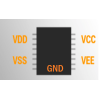
2024/06/6
Im modernen elektronischen Schaltungsdesign, Verständnis der Abkürzungen der Stromversorgungsspannung (wie VCC, VDD, VEE, VSS, GND).Diese Abkürzung... -
Ein Überblick über TTL- und CMOS -ICs und wie Sie zwischen ihnen wählen

2024/04/13
In diesem Artikel werfen wir einen detaillierten Blick auf zwei wichtige elektronische Technologien, komplementäre Metaloxid-Halbleiter (CMOS) und Tr... -
Verständnis des C1815 -Transistors: Pinouts, Schaltungssymbole, Anwendungsschaltungen
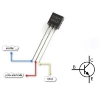
2023/12/20
Welche Art von Röhre ist der C1815?C1815 Triode PinoutC1815 ModellzeichnungC1815 -ParameterC1815 EigenschaftenAnwendung von C1815 Der C1815 -Transist... -
Verschiedene Arten von Sicherungen und Anwendungen

2024/04/18
Sicherungen sind wesentliche Komponenten in modernen elektrischen Systemen und fungieren als entscheidende Beschützer vor Überstrom.Sie arbeiten, in... -
LR44 -Batterien: LR44 -Batterieäquivalente und LR44 -Batterieersatz
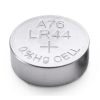
2024/01/24
In einem sich schnell entwickelnden technologischen Gebiet, in dem die Größe der elektronischen Geräte weiter schrumpfen und dennoch alltäglicher ... -
Grundkenntnisse über Sicherungen: Merkmale, Arbeitsprinzipien, Typen und wie man richtig auswählt
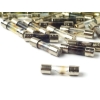
2024/04/10
Sicherungen schützen Schaltungen vor Schäden aufgrund von Überlastung oder Kurzstrecken.Dieses einfache, aber geniale Gerät basiert auf einem leic... -
Leitfaden zu Buck-, Boost- und Buck-Boost-Konverter
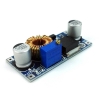
2023/12/21
Was ist ein Buck -Konverter?Wie funktioniert ein Buck Converter?Was ist ein Boost -Konverter?Wie funktioniert ein Boost -Konverter?Was ist ein Auftrie... -
Beschreiben Sie kurz die Spezifikationen, Verpackungen, das Arbeitsprinzip, die Vorteile und die Umweltauswirkungen von Lithium-Ionen-Batterien
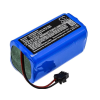
2024/03/20
Seit der Einführung von wiederaufladbaren Blei-Säure-Batterien im Jahr 1859 wurden sie allmählich in den Gewebe des technologischen Fortschritts ei... -
Transistor (BJT und MOSFET) Arbeitsprinzipien
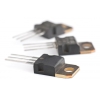
2023/12/20
Arbeitsprinzip des bipolaren Junction -Transistors (BJT)Auswahl der KomponentenwerteWie wählen Sie einen Transistor?Arbeitsprinzip von MOSFETWie scha... -
Beherrschen analoge und digitale Schaltungen: Ein Anfängerführer

2023/12/20
Definition und Eigenschaften von analogen Schaltungen und digitalen SchaltungenDer Unterschied zwischen analogen Schaltungen und digitalen Schaltungen... -
Grunde elektronische Grundkomponenten verstehen - Widerstände, Kondensatoren, Dioden, Transistoren, Induktoren und digitale Logik -Tore
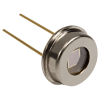
2024/04/13
Elektronische Komponenten sind der Eckpfeiler des Bauens und der Optimierung elektronischer Schaltkreise.Von gewöhnlichen Haushaltsgeräten bis hin z... -
Eine vollständige Liste von Testmethoden für verschiedene Transistoren
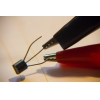
2023/12/20
Der Transistor wurde von John Bardeen, William Shockley und Walter Brattain erfunden.Es handelt sich um ein Kollektor-, Emitter- und Basis-Drei-termin... -
Transistor umfassender Leitfaden

2023/12/20
1. Was ist ein Transistor?2. Wie funktioniert ein Transistor?3. Vorteile von Transistoren4. Arten von Transistoren5.faq 1. Was ist ein Transistor? Ein...
Heiße Teile
- LMK063BJ472MP-F
- 06031A181JAQ2A
- CC1206JKNPOCBN181
- 04026D823KAT2A
- AD5546BRUZ
- ADSP-2105BP-80
- EP1C20F400I7
- SI3050-E1-FTR
- LM4890ITLX/NOPB
- EL5172ISZ
- AD8567ARUZ
- TW8835AT-LA2-GRH
- DS2756E+
- HIP6006CV
- PIC16C620A-20I/SS
- 74LVX4245QSC
- TPS735285DRVT
- UC3832DWTR
- REC3.5-0515SRW/R10/C/X1
- V24C24H100BL
- VI-200-MX
- VI-223-MW
- HMC276QS24ETR
- ST72F521AR9T6
- XC2C512-10FTG256C
- 6MBI25S-120-02
- BSM100GAR60DLC
- SW24PHN320
- V48C5M50AL
- OMAP1510G
- AM9435P-T1-PF
- ICM7555ID
- JCS4N60F
- MAX9926UAEE/V
- UPD75008-E97
- HD64F2214TE16
- MV64462-BAY1
- MV78230-B0-BJR2C106
- MPQ4430GL-AEC1-Z
- BNO085
- T491A105M035AT4021
- T491B226K010ZTAC00
- AV80585UG0093M
- GM8286EF-QD
- MT27518A1-FCCR-HP
- PEB20256FEV2.1ES
- DP693QFN66G-A0
- MLF13155-5P

